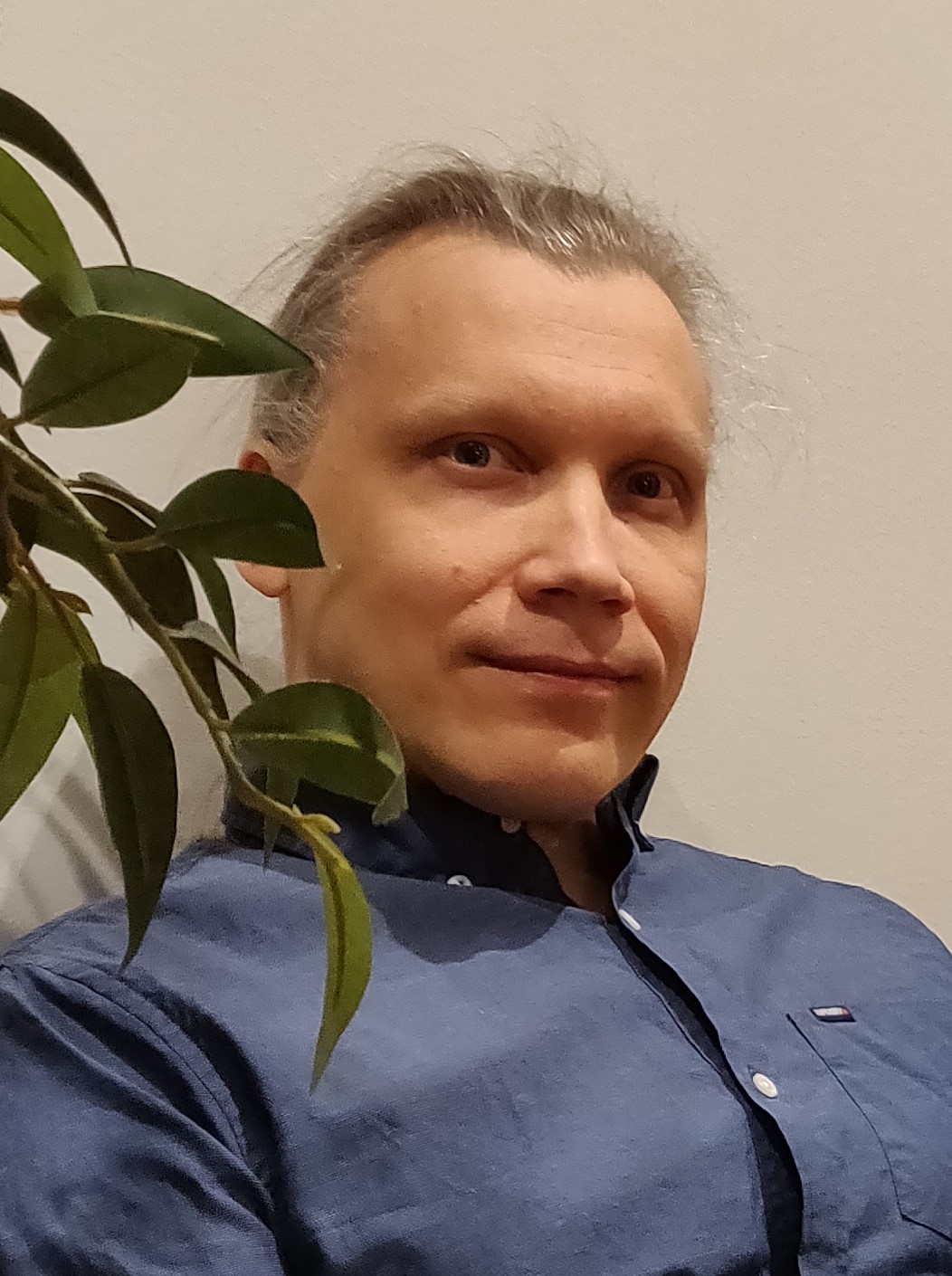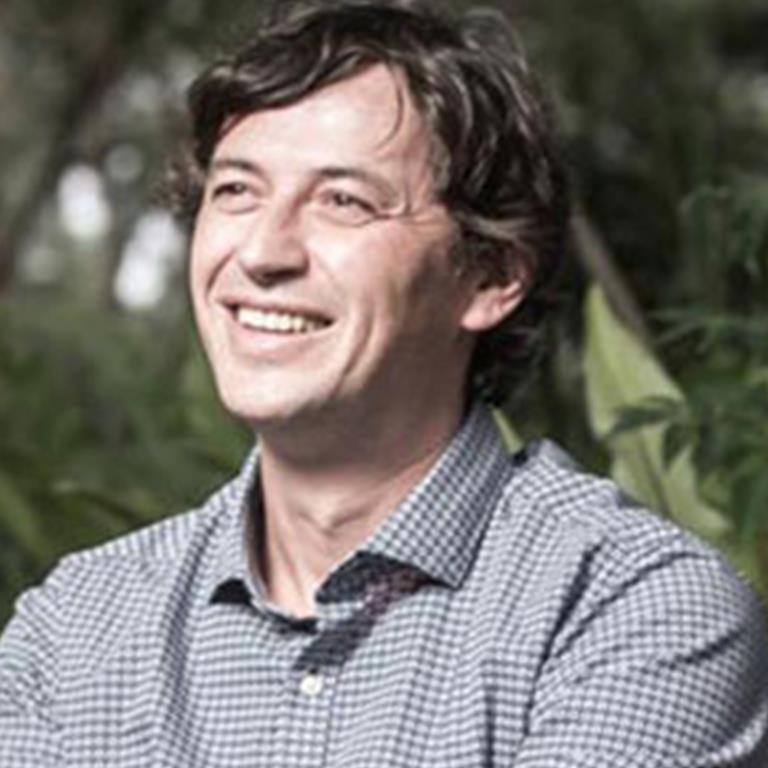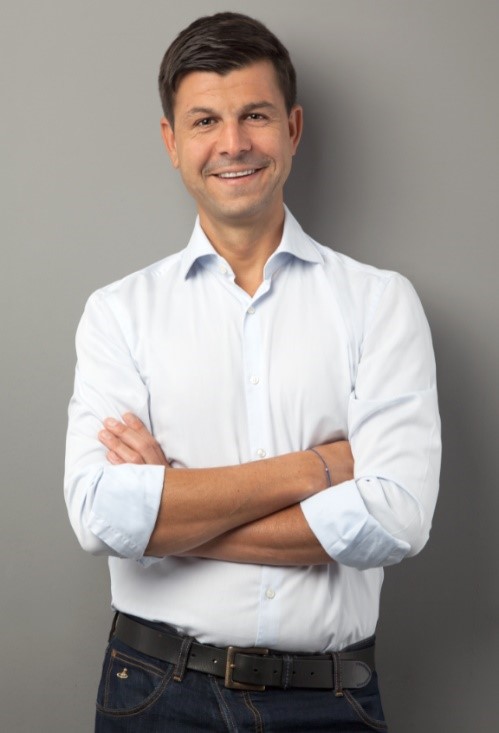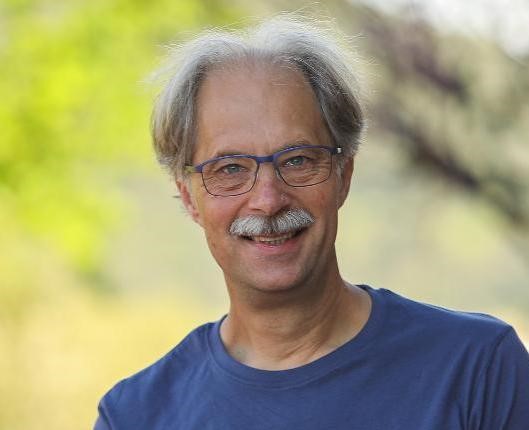Program
Times are presented in CEST
CTE-STEM Compiled Proceedings 2022
Download the program book.
15 June 2022
Welcome
Opening conference
Coffee break
Paper presentations
Session 1
Lunch break 1
Paper presentations
Session 2
Lunch break 2
Keynote:
What does it mean to be digitally competent today and what can be done to improve the provision of digital skills in education and training?
By: Georgi Dimitrov | Head of Unit Digital Education, European Commission, Directorate General Education and Culture
Abstract: Technological progress has raised exponentially the need for digital skills and competences at all levels across the economy and society. Yet the level of digital skills of different segments of the population - be it professionals, adults or young people - remains unsatisfactory low. Georgi Dimitrov (European Commission, DG Education and Culture) will provide an overview of the priorities and objectives of the Commission’s Digital Education Action Plan 2021-2027, with particular attention to the initiatives aiming at strengthening digital skills development. By looking at recent available data, he will focus on the advantages and the role that an effective provision of informatics in school education can play to promote active, responsible and safe use of technologies from a young age.
About Georgi Dimitrov
Georgi Dimitrov is responsible for the Digital Education unit in the European Commission, Directorate General for Education and Culture. He joined the European Commission in 2008 and was first involved in various roles in setting up the European Institute of Innovation and Technology (EIT). He then helped to develop and launch HEInnovate, an initiative by the European Commission and the OECD aimed at supporting universities to become more entrepreneurial. He led the development of the first Digital Education Action Plan adopted in January 2018 and also of the new Digital Education Action Plan 2021-2027 that was adopted in September 2020. Before joining the Commission, Georgi worked for a leading multinational telecommunication company and in a software start-up in Germany. Georgi studied at the University of Bonn (M.A.), the University of Erlangen-Nürnberg (PhD) and the Open University UK (MBA in Technology Management).
Coffee break
Workshop:
IMTSECT - Immersive Multimodal Technologies for STEAM Education and Computational Thinking
By: Prof. Dr. Roland Klemke, KhaleelAsyraaf Mat Sanusi, Daniel Majonica, Melina Rose | Open Universiteit & Cologne Game Lab,TH Köln
Immersive technologies, such as those used for virtual and augmented reality, allow to create virtual environments in which users are fully immersed into interactive spaces.
Combined with methods of multimodal interaction, these immersive environments allow for simulating natural ways of communication and interaction of human beings and software systems.
For education in STEAM (Science, Technology, Engineering, Arts, Mathematics) or Computational Thinking, such technologies enable learners to explore complex phenomena in safe environments with a maximum of interaction and intensity.
Especially in fields, where interaction with real environments would be too expensive (such as learning with industry scale robots), too dangerous (such as certain experiments in chemistry), or simply not possible (such as traveling through time or space), immersive technologies can enable learning and training that would otherwise simply not be possible.
This workshop generally introduces immersive technologies and the principles of multimodal interaction. Along several examples from past and ongoing research and development projects, participants get to know the possibilities and benefits of immersive multimodal technologies for education and beyond.
Participants will be enabled to
- Explore immersive multimodal technologies
- Understand core elements of immersive learning solutions
- Design own educational ideas into immersive multimodal concepts
Online Workshoparea 1
Workshop:
FluiGo | Learn through play with the Flui.Go Kit
By: Flui.Go
Flui.Go Kit is not just a toy; it is a open-ended play system that uses creativity to make playing and learning a holistic and evolving experience.
The Flui.Go Kit supports traditional STEM classes by helping to:
- Teach scientific principles in a playful way.
- Develop critical thinking and problem-solving skills.
- Promote teamwork through collaboration when performing the experiments.
- Encourage imagination and curiosity.
- Capture the student's attention with a 'hands-on' approach.
APSCE CTE-STEM Workshop
During the workshop you will have the chance to discover the Flui.Go Kit!
You will be guided through the learning material included in the kit and the various experiments that you can perform.
Experience first hand the innovative nature of the Flui.Go kit and the benefits that it can bring to your STEM classes.
More information: www.fluigoscience.com
Online Workshoparea 2
16 June 2022
Keynote
Programming as a Medium
By: Jens Mönig | SAP
Computers, apps and programming languages are still commonly referred to as tools that help us accomplish tasks by amplifying particular skills such as calculating and remembering. Yet as computers and their apps have evolved into channels of communication among us and our appliances, programming languages are becoming a medium letting us interface with the world and express our ideas. I will present the Snap! visual programming language and discuss its design principles from the perspective of encouraging learners to approach programming not just as a tool for production but as a medium for exploration.
Snap! Is a Scratch-like programming language that treats code-blocks as first class citizens instead of confining them to an editing modality. Embracing nested data structures and higher order functions Snap! lets learners create arbitrary control structures and even custom programming languages with just blocks. Snap! has been developed for UC Berkeley’s introductory computer science course named “The Beauty and Joy of Computing”.
About Jens Mönig:
Jens Mönig is a researcher at SAP and makes interactive programming environments. He is fanatical about visual coding blocks. Jens is the architect and lead programmer, together with Brian Harvey, of UC Berkeley’s "Snap! Build Your Own Blocks" programming language, used in the introductory “Beauty and Joy of Computing” curriculum. Previously Jens has worked under Alan Kay on the GP programming language together with John Maloney and Yoshiki Ohshima, helped develop Scratch for the MIT Media Lab and written enterprise software at MioSoft. Jens is a fully qualified lawyer in Germany and has been an attorney, corporate counsel and lecturer for many years before rediscovering his love for programming through Scratch and Squeak. For leisure Jens likes guitar picking and strumming his mandolin.
Coffee break
Session 3:
Paper presentations
Lunch break 1
Session 4:
Paper presentations
Lunch break 2
Keynote
From Rule-Driven to Data-Driven Computing Education in K-12
By: Prof. Matti Tedre | School of Computing, University of Eastern Finland

In the 2000s a number of data-driven technologies, most prominently machine learning (ML), have become commonplace in apps, tools, and services. Understanding some key ideas related to ML is becoming crucial for understanding how many key elements of our digital environment work. The power of traditional, rule-based computational thinking (CT1.0) to explain ML-driven systems is, however, limited, and new approaches to computing education are needed. A body of literature on how to teach some principles of ML and data-driven computing in K-12 education is emerging, but that body of literature relies on a set of concepts and skills very different from traditional CT1.0. This talk outlines the key changes in the conceptual landscape, educational practice, and technology for ML-enhanced CT (CT2.0) and compares it to the dominant computing education paradigm.
Coffee break
Workshop:
Computational thinking in STEM Education
By: Dr. Hanno van Keulen | associate professor and Director of Studies of the MSc Science Education & Communication at Delft University of Technology.
STEM is an acronym of Science, Technology, Engineering and Mathematics. It can pertain to any combination of the learning objectives and activities native to these disciplines. In a wider sense, STEM stresses the integral, holistic nature of many phenomena, objects and processes in the material world. Counting, computing, and programming, like observing, experimenting, hypothesizing, modelling, or causal reasoning is something that occurs naturally in many STEM activities in education. Computational thinking may be an objective in itself, or a means to achieve other attainment targets.
In this presentation, computational thinking in STEM will be addressed in three different situations.
The first is the world of early childhood, where children learn predominantly through embodied perception and action. Notions like up and down, left and right, forward and backward are explored with the body and applied to manipulate artifacts, such as BeeBot, that can be programmed through pushing buttons.
The second example draws on an experiment in which children aged 9-14 with an Autism Spectrum Disorder (ASD) learned to build and program a robot (OzoBot, LegoMindstorms), to simulate shopping in a supermarket. They learned computational thinking, but more importantly, this task is a context to acquire social skills. Firstly, by collaborating in the technological and computational challenges, secondly, to solve challenges with a social character, like avoiding collisions with other customers-robots; asking for help to find out where empty bottles can be returned, et cetera. When possible, hands-on experiences with LegoMindstorms supermarket challenges will be provided.
The third example draws on design projects in upper secondary education in so-called Technasium schools. These schools provide students with real STEM projects, e.g., on the energy transition, water management, environmental hazards. Often, computational thinking and programming is part of the challenge.
We will end with reflections on the curriculum, on teacher training, and on cooperation of schools with IT-professionals to prepare children and students for our highly technological society.
Hanno van Keulen is associate professor and Director of Studies of the MSc Science Education & Communication at Delft University of Technology. He is Editor-in-Chief of the European Journal of STEM Education.
Online Workshoparea 1
Workshop:
Computational Thinking with your Hands
By: Dr. Nardie Fanchamps, Open University, the Netherlands & Dr. Christian Glahn, ZHAW, Switzerland
Abstract:
The development of computational thinking can be stimulated by means of a variety of unplugged and plugged-in applications, programming environments and materials. Educational robots are equipped with sensors and motors that can be programmed to use the sense-reason-act (SRA) approach. However, in physical computing programming is not limited to writing computer code or software. Physical computing also allows programming with hardware and the environment. This generates opportunities for students who have not fully developed competences to abstract processes into steps and rules. Moreover, using the environment as a programming platform allows for new and natural approaches cooperation, collaboration, and competition in the computational thinking classroom.
In this hands-on, tangible physical computing workshop we will use the environment to program robots. It clarifies the impact of learning to program robots on cognitive development of computational thinking as a creative task. We present and apply learning activities for stimulating the students' creativity, collaboration, and exploration for demonstrating the SRA-approach in physical.
Physical computing refers to approaches of using computers to work in and interact with the environment. Often computers in physical computing lack a traditional display, mouse, and keyboard but are equipped with sensors, buttons, speakers, and motors. Today we find physical computing applications in smart speakers, smart lightbulbs, or even robots. Learning to control smart devices on different levels is key for responsible and democratic innovation.
The construct of SRA-programming is a supportive process that combines external, sensor-based measurements (sense), computing devices to process these measurements (reason), and executing desired actions as outcomes (act). The ability to anticipate changing conditions in the task design through sensor-based observations requires a different programming approach in comparison to linear, sequential solutions. While this approach is suitable for linking to the more traditional approaches of teaching programming in schools, it involves abstractions of using data and hardware at different levels. In this workshop we explore learning activities that help students to learn and develop these abstractions by using creativity, cooperation, and collaboration.
Online Workshoparea 2
Workshop:
Hedy: A gradual programming language
By: Marleen Gilsing
A laptop is required for this workshop
Many teachers want to teach programming to their pupils today, but how to approach it? Block-based languages like Scratch are great for the first steps, but at one point, you want to move on to textual languages such as Python. Python however is quite hard for kids to get started with since it is a language for professional programmers.
Hedy (www.hedycode.com) is the solution for this problem! The core idea of Hedy is that it uses different language levels. In level 1, there is hardly any syntax at all, for example, printing is done with:
print hello teachers at CSE-STEM!
In every level, new syntax and concepts are added, until kids are doing a subset of Python in level 20 with conditions, loops, variables and lists. The levelled approach means that learners do not have to learn all syntax rules at once. Hedy is aimed at children that want to get started with textual programming languages, but for whom starting with Python might still be too complex.
Hedy runs in the browser, is free to use and comes with built-in lesson plans, ready to use. It also has a special teacher's interface in which you can create classes and customise which assignments your students can work on.
Hedy was launched in early 2020 and since then almost 1.5 million Hedy programs have been created by children worldwide.
Online Workshoparea 3
Social event:
Dinner at the beach
17 June 2022
Keynote:
AI in the Classroom – Students Collaborating with AI to Solve Complex Problems
By: Prof. Maarten de Laat | Centre for Change and Complexity in Learning, University of South Australia

In this keynote I will present some current work at our Centre for Change and Complexity in Learning to help address this issue. I will showcase some initiatives where students will work together with AI to solve complex problems. Our mission is to offer an AI learning environment where students can take ownership over AI, experiment with it and develop AI to follow their imagination. The environment is a social space for exploration and critical evaluation, it’s safe and inspiring. This is how we want students to treat AI. Rather than that AI is done to you, students should be able to play with AI, and through play, shape it so that AI starts to work for you and help you to go beyond your own capability.
Coffee break
Session 5:
Paper presentations
Lunch break 1
Session 6:
Paper presentations
Lunch break 2
Closing ceremony
CTE-STEM 2022
 Registration website for CTE-STEM 2022
Registration website for CTE-STEM 2022TU Delftcte-stem2022@tudelft.nl
TU Delftcte-stem2022@tudelft.nlhttps://cte-stem2022.tudelft.nl/home
2022-06-15
2022-06-17
OfflineEventAttendanceMode
EventScheduled
CTE-STEM 2022CTE-STEM 20220.00EUROnlineOnly2019-01-01T00:00:00Z
To be announcedTo be announced

